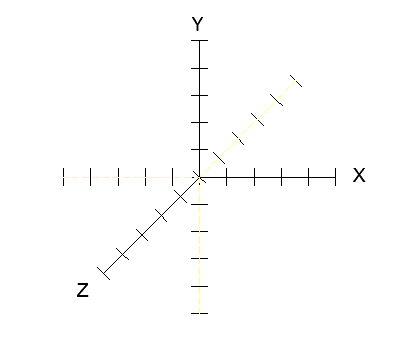 |
||||||||
 |
 |
 |
 |
|||||
 |
||||||||
 |
||||||||
 |
 |
|||||||
 |
||||||||
 |
||||||||
 |
||||||||
 |
||||||||
 |
||||||||
THE THREE-DIMENSIONAL CARTESIAN COORDINATE SYSTEM
A third axis can be added to the 2-D coordinate system in order to create a three-dimensional (3-D) coordinate system. This is done by simply adding the third axis orthogonal (normal) to the 2-D plane at the origin of the coordinate system. This axis cannot be seen except in an isometric view of these axes. This third axis is typically known as the z axis as shown here. This introduces an important rule of thumb, the right hand rule.
THE RIGHT HAND RULE
The right hand rule is a common mnemonic for understanding notation conventions for vectors in 3-D. It is also useful when trying to remember which way is positive in a three dimensional Cartesian coordinate system. Since having three axes can get a little confusing, knowing this technique will help one make the correct decision.
Simply begin looking at one’s palm and pointing the index finger while separating the thumb as far as possible from the index finger. Here, the index finger represents your y axis while the thumb represents the x axis. Now, simply pointing the middle finger orthogonally from the index finger, one can find the positive direction z axis.
← Previous Page
← Previous Page

